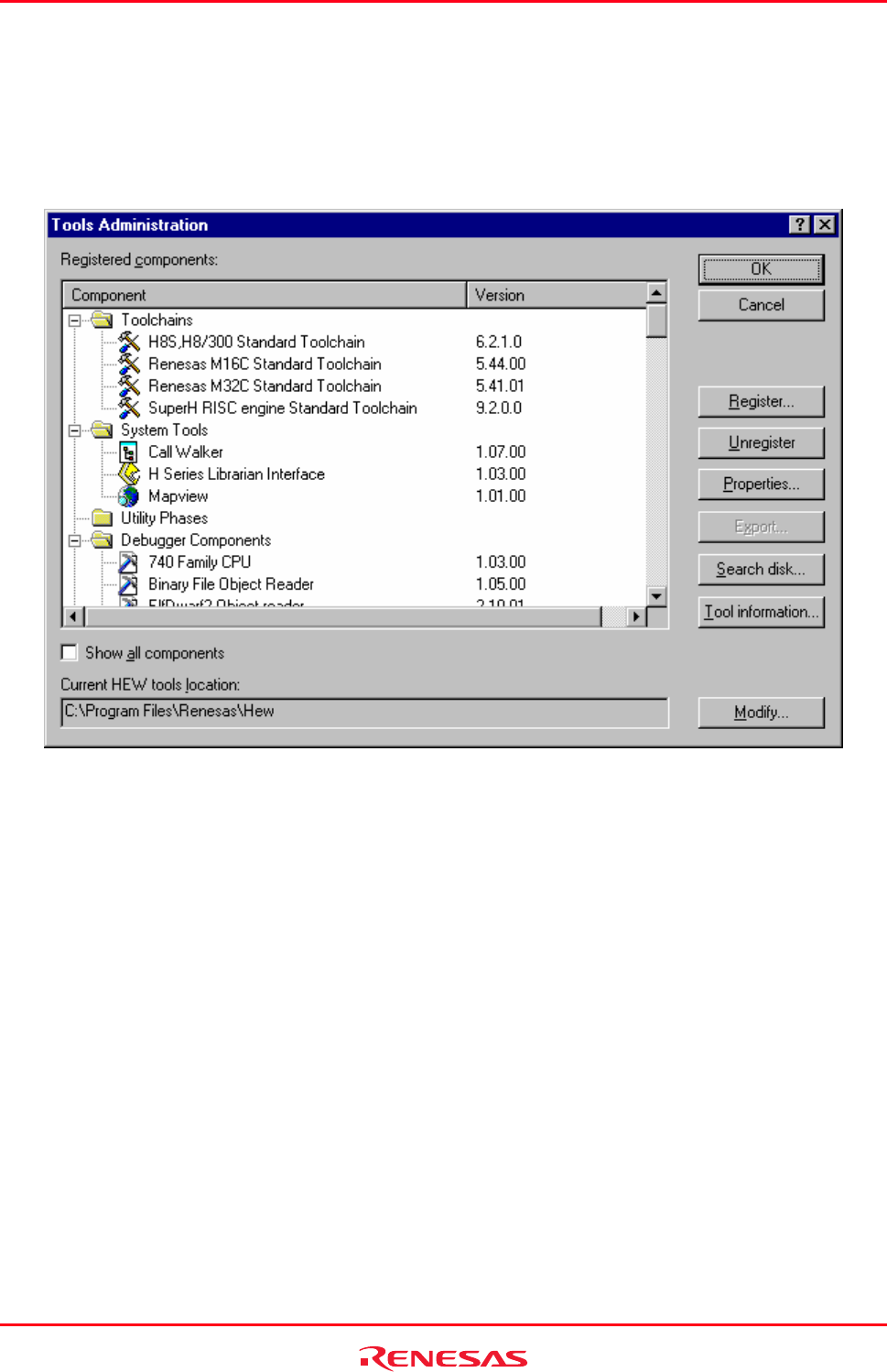
High-performance Embedded Workshop 5. Tools Administration
REJ10J1837-0100 Rev.1.00 Nov. 16, 2008
109
5. Tools Administration
You can control the components that are used by the High-performance Embedded Workshop via the Tools
Administration dialog box, which is invoked by selecting [Tools -> Administration]. The Tools Administration
dialog box is only accessible when no workspace is open.
There are five standard types of component:
Toolchain A Toolchain is a set of build phases (e.g. compiler, assembler, linker and librarian).
These components provide the build capability.
System Tool A System Tool is an application (.EXE) that can be launched from the Tools menu.
These are often provided as extra applications, which support the toolchain (e.g. an
interactive graphical librarian, etc.).
Utility Phase A Utility Phase is a ‘ready made’ build phase, which supports some specific build
functionality (e.g. analyze complexity of source code, count lines of source code, etc.).
These components provide added functionality to the build that is not toolchain-specific.
Debugger Component A Debugger Component is a component that supports some specific debugger
functionality (e.g. CPU DLL, Target platform, Object reader, etc.).
Extension Component An Extension Component is a component that provides key functionality in a certain area
of the High-performance Embedded Workshop system. These components cannot be
unregistered when installed (e.g. The High-performance Embedded Workshop builder,
debugger and flash support).
5.1 Tool locations
The High-performance Embedded Workshop maintains the locations of High-performance Embedded Workshop
compatible components automatically as each new tool is installed. After installation, the High-performance Embedded
Workshop stores information about the component (including its location). This is referred to as Registration.


















